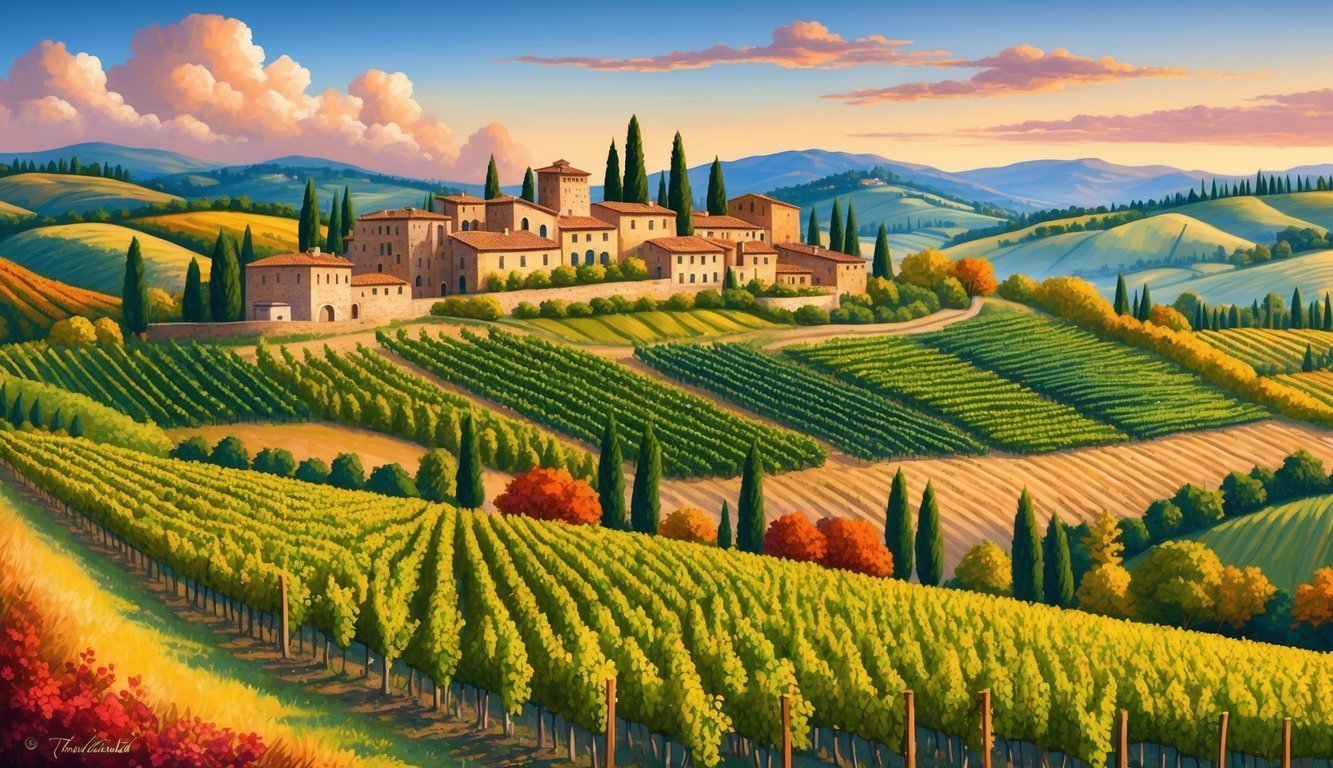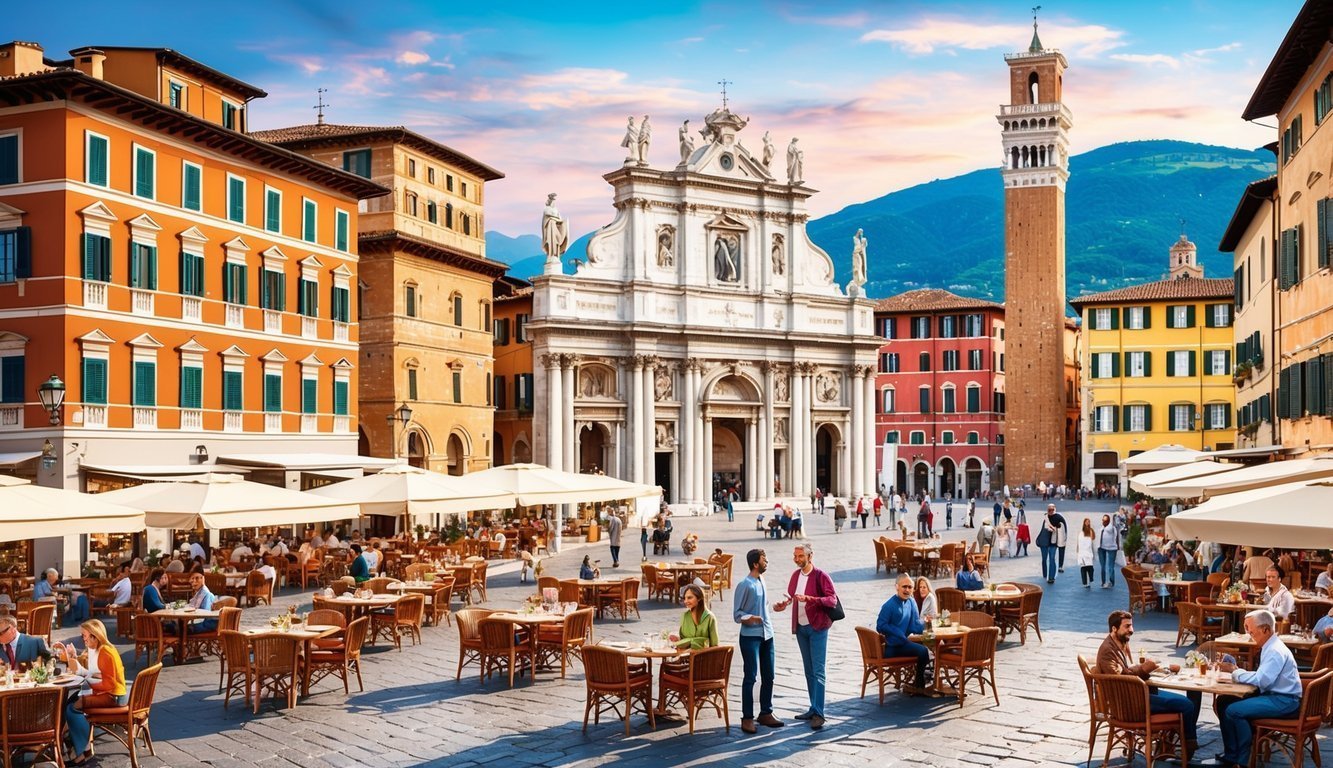Italy offers countless opportunities for exploration, filled with stunning landscapes, rich history, and delicious cuisine.
With so many destinations to choose from, planning your trip can feel overwhelming. These five well-crafted itineraries will help you navigate through some of the best sights and experiences that Italy has to offer.
No matter if you’re a first-time visitor or someone returning for more of Italy’s charm, there’s something here for you.
From vibrant cities to serene countryside, you will find a balance of adventure and relaxation.
Each itinerary is designed to make the most of your time, ensuring you enjoy the essence of Italian culture.
Italy’s Charming Seasons

Italy offers a variety of beautiful experiences throughout the year.
Each season brings its own unique charm, perfect for different types of travelers.
Here’s a closer look at when to visit and what seasonal experiences to expect.
Best Time to Visit
Spring (March to May) is a magical time in Italy.
The weather is mild, flowers bloom, and tourist crowds are thinner.
Cities like Rome and Florence come alive with festivals and outdoor events.
Summer (June to August) is popular, especially for beach lovers.
The Amalfi Coast and Sicily are favorite spots.
Expect warm weather but also larger crowds.
Make sure to book accommodations early.
Autumn (September to November) is harvest time.
It’s a great period for food lovers to enjoy local wines and cuisine.
The colors of vineyards are breathtaking, especially in Tuscany.
Winter (December to February) can be cold, but the festive spirit is enchanting.
You can experience Christmas markets in cities like Verona and Venice.
Plus, winter sports in the Alps are perfect for adventure seekers.
Unique Seasonal Experiences
In spring, you can explore blooming gardens like the famous Boboli Gardens in Florence.
Local gelato festivals are a fun highlight.
During summer, experience vibrant beach parties and outdoor concerts.
Don’t miss the incredible food festivals featuring fresh seafood and local wines.
Autumn brings wine harvest festivals, especially in regions like Chianti.
You can join grape picking tours and enjoy seasonal dishes like pumpkin risotto.
In winter, immerse yourself in traditional Italian Christmas celebrations.
Try the delicious holiday treats, like panettone, and enjoy the stunning light displays in major cities.
Additionally, ski resorts in the Dolomites offer great slopes and cozy lodges for a winter getaway.
Cultural Highlights

Italy is a treasure trove of culture, filled with historic landmarks and stunning art.
You’ll find incredible sites and beautiful structures that tell the story of Italy’s rich past and artistic heritage.
Historic Landmarks
As you roam Italy, historic landmarks are a must-see.
The Colosseum in Rome stands as a grand reminder of the ancient Roman Empire.
It once hosted gladiator games and can hold over 50,000 spectators.
Off to Florence, you’ll encounter the Duomo, a breathtaking cathedral known for its massive dome designed by Brunelleschi.
This is not just a church but a symbol of the city’s artistic achievements.
Don’t miss Venice’s St. Mark’s Basilica, recognized for its opulent design and stunning mosaics.
Each landmark offers a glance into Italy’s glorious history and architectural prowess that’s hard to forget.
Art and Architecture
Italy is also the birthplace of Renaissance art.
In Florence, visit the Uffizi Gallery, where you can admire works by masters like Leonardo da Vinci and Botticelli.
Their paintings capture the essence of human emotion and beauty.
In Rome, the Vatican Museums showcase extraordinary art collections, including Michelangelo’s Sistine Chapel ceiling.
The level of detail and creativity will leave you in awe.
Venice is famous for its unique architecture.
The beautifully ornate Palazzo Ducale stands as a symbol of Venetian power and artistry.
Each region offers its own unique style, reflecting the diverse cultures and histories that shaped Italy.
Frequently Asked Questions

When planning your trip to Italy, you might have specific questions about how to make the most of your time there.
Below are some common inquiries that can help guide your travel plans.
How can I explore Italy in 5 days starting from Milan?
To make the most of five days, start in Milan, then head to Venice.
Spend one day in Milan visiting the Duomo and La Scala, then take a train to Venice for two days exploring canals and St. Mark’s Basilica.
Finally, wrap up with two days in Florence, checking out the Uffizi Gallery and the Ponte Vecchio.
What’s the ideal number of days for a solid trip through Italy?
A solid trip usually takes about 10 to 14 days.
This allows enough time to see major cities like Rome, Florence, and Venice, along with some hidden gems.
Each city offers unique experiences, so the more time you have, the better your journey can be.
Can you suggest a 2-week itinerary for Italy that includes the Amalfi Coast?
For a 2-week itinerary, consider starting in Rome for 4 days, then spend 3 days in Florence.
Next, head to the Amalfi Coast for 3 days, stopping in Positano and Ravello.
Finally, visit Venice for 3 days before returning to Rome for your departure.
What’s the best route for a 7-day adventure across Italy?
An ideal 7-day route starts in Rome for 3 days, then travel to Florence for 2 days.
On day 6, take a train to Venice for the last day.
This route covers major attractions while allowing you to experience different regions.
If I have 3 weeks in Italy, what should my itinerary include?
With 3 weeks, you can explore many parts of Italy.
Start in Rome, then travel to Florence, Venice, and the Amalfi Coast.
Include day trips to places like Pisa, Cinque Terre, and Tuscan vineyards.
This timeframe allows for a deeper dive into the culture and cuisine.
What month offers the best experience for touring Italy?
The best months to visit Italy are April to June and September to October.
During these times, the weather is pleasant, and you can avoid the summer crowds.
Spring brings blooming flowers, while fall offers a stunning display of autumn colors.
